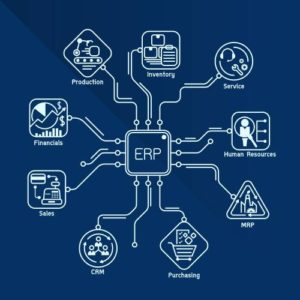Storyselling is so much more than a trend in sales. It’s a philosophy of communication and an expression of your company culture. Most importantly, it’s a way to empower your sales team to speak from the heart.
Regardless of what product or service you sell, and regardless of your industry, there’s one thing all businesses have in common: stories. The members of your sales department tell stories to each other all the time: about customer calls, wins, losses, and unforgettable interactions.
But what about storytelling in the sales process? How can your sales team use stories to build trust with prospects? And do they know the right story to tell?
Why Does Storyselling Matter In Sales Conversations?

Simply put, we believe in stories. Not because they’re fiction (“story” doesn’t always mean you made something up), but because they tap into emotion. Great stories give us insight about what we want and why we make certain choices. Told the right way, stories reveal truth and honesty.
That matters. As Smart Company reports, “91% of consumers rate ‘honest communication’ about products and services as the most important criterion for brand marketing.”
Great stories build trust between the salesperson and the prospect.
That’s why stories work in sales. But too many salespeople focus on products and services. Things. Instead, your sales team should sell the stories behind what they’re trying to convince others to buy. Hence the term “storyselling.”
The value of stories goes even further than that. As Katharina Cavano writes in Challenger, “beyond creating a meaningful connection, storytelling allows people to better comprehend and process complicated information and fully visualize an outcome.”
How to Develop a Storyselling Mindset

In order for your sales team to engage in storyselling, they must understand the story of your company and its culture. That understanding goes much deeper than your mission statement or what’s on the “about us” page of your website. It’s the reason behind what you do. It’s why you get up in the morning and want to come to work.
Maybe you started your business because you wanted to help people. You may have wanted to create change in the world, or just make other people happy. It’s important to tap into that reason— it’s the basis of your organization’s philosophy.
Make sure you share that information with your sales team. They need to not only understand what’s at the heart of your company, but they also need to believe in it. If they don’t, why should you expect their prospects to believe?
Whose Story Is It, Anyway?
As you focus on the story behind your company and culture, remember that sales come ultimately from conversations. Your sales department should, as practice, be able to access the same kind of emotion in a prospect that they convey themselves.
When asking salespeople to reach the “why” of what they’re selling, ask them also to connect with the prospect’s “why.” There exists an emotion behind every choice we make, including what we purchase. Uncovering that reason can help forge deeper connections between sales and prospects.
Members of your sales department shouldn’t dominate a conversation with your own company’s narrative. However, it’s a great way to begin a lasting dialogue and customer relationship.
How You Tell = How You Sell

Much of a story’s power is in the way it’s told. The best salespeople are actors. Again, it’s not because they’re lying; rather, they have the ability to understand emotion and expression.
As Doug Stevenson writes in a popular LinkedIn post, “The best storytellers don’t simply ‘tell’ stories. They make their story come alive with physical animation, vocal interpretation and real emotion.”
It be worth bringing a theater coach in to do a workshop with your sales department. In fact, it might be the thing that awakens the storytelling power in future sales conversations.
Conclusion
Storyselling takes practice. If you’ve ever tried to tell a story and had your audience bored halfway through, you know that there are plenty of pitfalls to avoid in order to be an effective storyteller.
Learn more about this concept, then consider training your team on it. You’ll not only develop a better sales process— you’ll also create a more engaged sales department. When your employees access belief in your company and product or service in every sales conversation they have, the work they’re doing becomes far more meaningful.
Above all else, remember this: products and services are great. But stories sell them best.











